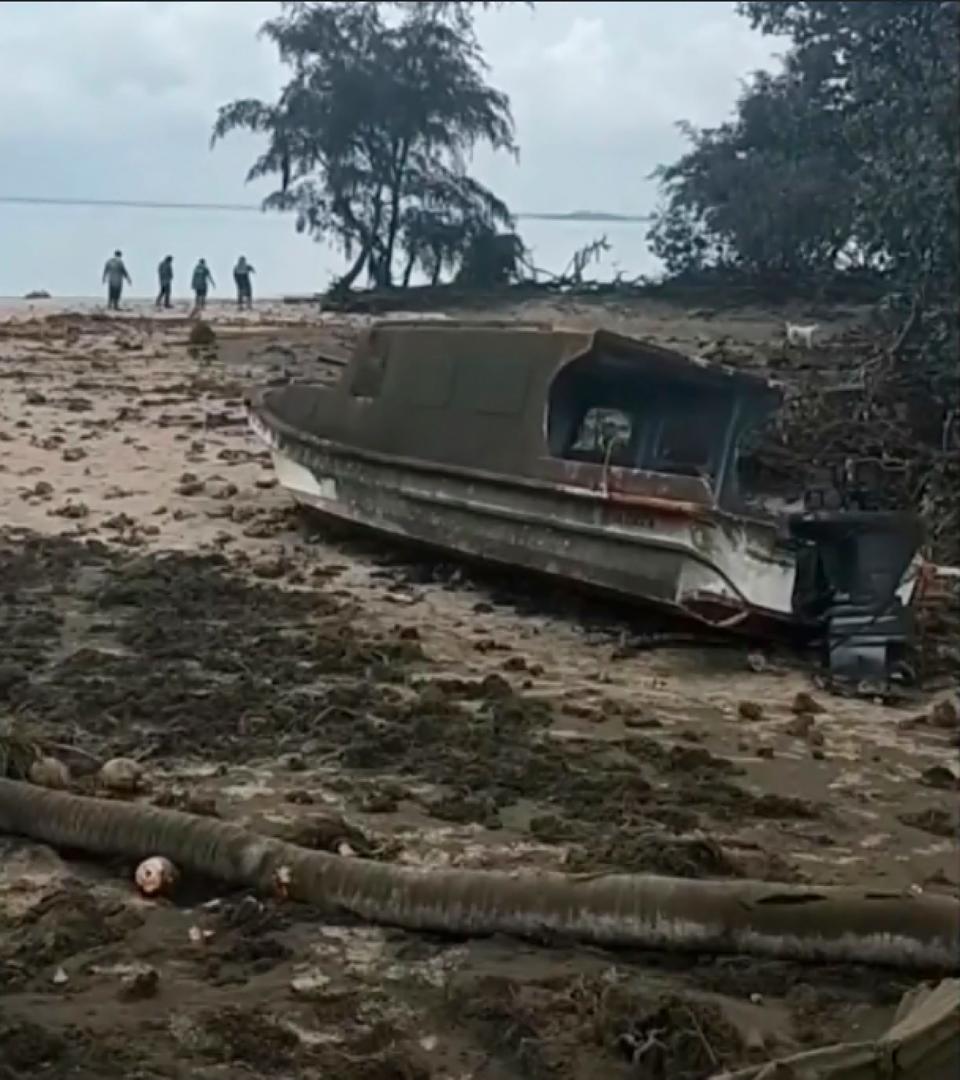Cape Canaveral weather stations record air pressure differences from volcano eruption 7,000 miles away
More than 7,000 miles from the volcanic eruption near the island of Tonga in the Pacific Ocean Jan.15, Cape Canaveral's weather stations picked up readings related to the eruption that day, city officials said.
Around the world, weather stations collected readings that showed the air pressure wave emanating from the volcano. At Cape Canaveral's water reclamation facility and City Hall, staff noticed a "distinct rise in air pressure of about one millibar that did not match any local weather conditions," said Zachary Eichholz, deputy community and economic development director and sustainability manager for the city.
Millibars values describe the amount of force it takes to move an object weighing 1 gram 1 centimeter in 1 second, according to the National Oceanic and Atmospheric Administration. The values used in meteorology range from about 100 to 1050 millibars, and at sea level, standard air pressure in millibars is 1013.2.
Satellite images show effects of volcano: Before and after images show Tonga smothered in ash after volcanic eruption causes tsunami
Also in Cape Canaveral: COVID-19 virus suddenly drops by half in Cape Canaveral sewage after record highs
The spike in air pressure measured at Cape Canaveral dropped quickly, which pointed to a significant event, Eichholz said. Later, news of the volcanic eruption broke.

It was the largest recorded eruption in at least 30 years, shooting an ash cloud more than 100,000 feet high into Earth's stratosphere and causing a tsunami across the Pacific, Eichholz said. The explosive power was equivalent to more than 600 Hiroshima bombs.
Staff at Cape Canaveral City Hall and the city's water reclamation facility sent the data readings to the National Weather Service office in Melbourne.
There, scientists confirmed the readings were a result of the volcanic eruption.
Finch Walker is a Breaking News Reporter at FLORIDA TODAY. Contact Walker at 321-290-4744 or fwalker@floridatoday.com. Twitter: @_finchwalker
Support local journalism. Subscribe today.
This article originally appeared on Florida Today: Volcano eruption affects readings at Cape Canaveral weather stations

